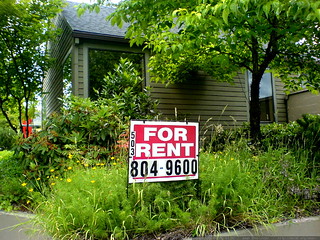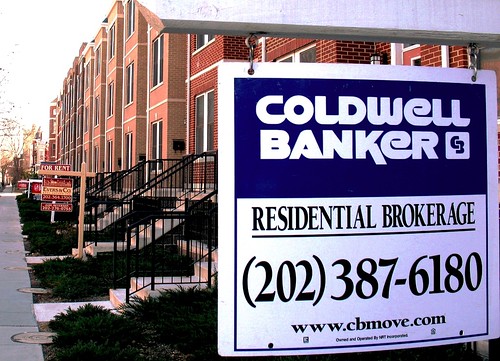New housing forecast mostly good for walkable communities

Posted May 17, 2012 at 1:28PM
The housing price recovery has begun, says a new report from The Demand Institute, a think tank recently launched by Nielson and The Conference Board to track consumer demand. Among the findings that are promising for more sustainable development patterns, the strongest segment of the market “comprises populous urban or semi-urban communities well served by local amenities.” The authors of the report, The Shifting Nature of US Housing Demand, call this group of properties the “resilient walkables” and forecast a home price rise of three percent by 2013, and up to five percent per year between 2014 and 2017.
The analysis concludes that the weakest segment of the market, by contrast, are in outer and smaller suburbs or outlying areas that “are sparsely populated, and have low walkability.” Though prices for this segment are “relatively cheap,” the authors contend that these “weighed down” properties will not rise in value enough to reach the national average even by 2017.
In other words, if you’re a real estate investor, put your money on smart growth and avoid sprawl. To those in the field, this simply confirms trends that have been documented for years. Alex Dodd summarized the report’s contrast between these two segments on Smart Growth America’s blog earlier this week.
A closer read of the new report, however, contains a lot of nuances, mostly but not entirely consistent with what other forecasters have been saying with regard to growing demand for smart growth. From the new report:
- Nationally, the recovery will accelerate between 2012 and 2013, and again between 2015 and 2017.
 The recovery will be led by increasing demand for rental homes, especially from younger people and immigrants. This, too, is consistent with my last analysis. The national share of occupied rental homes as a portion of the total has risen from 31 percent in 2005 to 35 percent in 2012, and home ownership has declined sharply among persons under 35. “The only segment of the home building sector now showing clear signs of recovery is multifamily housing,” driven by developers seeking to rent.
The recovery will be led by increasing demand for rental homes, especially from younger people and immigrants. This, too, is consistent with my last analysis. The national share of occupied rental homes as a portion of the total has risen from 31 percent in 2005 to 35 percent in 2012, and home ownership has declined sharply among persons under 35. “The only segment of the home building sector now showing clear signs of recovery is multifamily housing,” driven by developers seeking to rent. - But the dominance in rentals may be temporary. Conversion of for-sale homes now in oversupply to rentals will clear the excess, the authors say, after which home ownership will rise and return to historical levels.
- The average size of the American home will continue to shrink. By 2015, average new home size should be back to where it was in the mid-1990s.
- The extent to which walkability helps the market may depend on where you are. In addition to the strong “resilient walkable” category and the weak “weighed down” category, the report identifies two other segments: “slow but steady” homes in areas with average walkability and employment rates; and a “damaged but hopeful” segment, where neighborhoods are highly walkable but suffer from a weak regional economy. Both will see price recovery, though not as quickly and strongly as the resilient walkables; the slow but steady group will see it sooner than the damaged but hopeful group.
- In a prediction I find particularly troubling, “neighborhoods will be increasingly segregated economically, resulting in polarization.” The authors observe that the portion of Americans living in middle-income neighborhoods has declined considerably in recent decades, while the portions living in both affluent and poor neighborhoods has increased. “Housing stock within neighborhoods will become more homogenous.”
 While the increased demand for urban and walkable, transit-served neighborhoods is clear - the authors note the positive correlation between Walk Scores and prices, “many Americans - particularly those planning to purchase - will move even farther from the city to suburbs where housing is more affordable.”
While the increased demand for urban and walkable, transit-served neighborhoods is clear - the authors note the positive correlation between Walk Scores and prices, “many Americans - particularly those planning to purchase - will move even farther from the city to suburbs where housing is more affordable.”- There will be some ancillary effects of the increased demand for urban, smaller, and rental properties. Industries that will do well include home remodeling, carsharing, and portable appliances. Homes with less space for storage but more accessibility to shops may also lead consumers to more frequent purchases of smaller sizes of packaged goods.
So, particularly for those of us who prefer a future of more mixed-income neighborhoods with a variety of housing types, we may want to pay attention to policy shifts that can help us get there, since at least this forecast suggests that the market alone will not do it. It also suggests that maintaining a supply of affordable units in high-demand walkable neighborhoods may be critical to dampening a potential rebound market for sprawl.
Still, the central finding is one that is heartening after decades of both policy and market forces wreaking damage on central cities while paving over cornfields and forests to build mediocre development:
“Although demand for new and existing homes will rise, consumer demographics as well as altered preferences will change the nature of that demand . . . demand will be high in areas well served with amenities that are within walking distance and that have a sense of community. Sprawling, featureless suburbs will be less attractive.”
The more cities and inner suburbs strengthen, the more the environment will benefit.
Related posts:
- How the evolving housing market will help sustainable communities (April 4, 2012)
- The new economy: work closer, live smaller, connect better (December 30, 2011)
- Geography of housing recovery favors cities and walkable neighborhoods (October 26, 2011)
- Housing preference analysis: we have too much large-lot housing, too little urban housing to meet demand (May 2, 2011)
- Housing market strengthens for smart growth: dramatic new data from the DC area (April 26, 2010)
Move your cursor over the images for credit information.
Please also visit NRDC’s sustainable communities video channel.
